Contemporary Church History Quarterly
Volume 20, Number 4 (December 2014)
A Crusade, a Holy War: Protestant Preaching in War-time, 1914.
By Manfred Gailus, Technische Universität Berlin
This article is based on “Ein Gott, der Fahnen entrollt,” zeitzeichen: Evangelische Kommentare zu Religion und Gesellschaft, 7 July 2014, available at http://www.zeitzeichen.net/schwerpunkt/fruehere-schwerpunkte/kirchen-und-1-weltkrieg/ . Our thanks to John S. Conway for his translation of Manfred Gailus’ text.
For the Berlin Court and Cathedral preacher Bruno Doehring, preaching to a large crowd from the steps of the Reichstag in a spontaneous service on 2 August 1914 was the high point of his life. The war had hardly got underway, but Doehring expressed in his inflammatory address all the main themes of Protestant war theology. This war, he told the crowd, had been forced on Germany. As a result, this could be seen as a perfectly justified war of defense against a conspiracy of surrounding enemies.
Yes, if we didn’t have justice and a clear conscience on our side, if we didn’t feel – I should almost say implicitly – God’s presence, which encompasses our flags and leads our Kaiser to take up his sword and call for a crusade and a holy war, then we should be shaking in our shoes with timidity. But now we will boldly give a defiant answer, one which is the most German of all: We Germans fear God, and nothing else in the world.
This patriotic war-time euphoria which gripped so many Germans in the late summer of 1914 was accompanied by a wave of religious enthusiasm. In the church the heightened sense of comradeship brought about by the events of August was seen as the beginning of a new era. The outbreak of war was enthusiastically greeted by many Protestants (and hardly less by many Catholics). The war raised the level of religious fervor and was theologically justified as a “holy war” or “righteous war” undertaken by Christian Germany against an imagined world of enemies, consisting of sinners or heathen or godless barbarians. Pastors, theological professors and publicists all took this historic moment to be a clear signal from God calling the people back to faith and the church from the allurements of faithlessness.
On 11 August 1914, the leaders of the Prussian Protestant Church, which was by far the largest in the country, issued the following declaration: “Seemingly lifeless signs of faith are awakening once more….The fields are white and ripe for a spiritual harvest.” But what did these leaders mean by conjuring up this somewhat questionable image? Clearly they could expect a great deal of suffering, death and distress, which would lead to a new and more realistic sense of the need to take life seriously. This would put an end to the too long period of peace since 1870-71 which had induced indifference and a frivolous superficiality of life. Now the need for faith, the church, communion, pastoral care and prayer would once more be recognized.
Early reports in the first days and weeks of the war seemed to confirm such expectations. Years later, Pastor Paul Vetter, in Berlin Friedenau, recalled almost nostalgically the enthusiasms of those late summer days. On 5 August, in response to an edict sent out by the Kaiser ordering a “day of prayer in war-time,” his church was almost overwhelmed by the number of those who wanted to participate.
At first we planned to have an overflow evening service, then an extra early morning service. In fact we had to have five services. When the church was filled up by 10 a.m. the parishioners got the off-duty pastors to leave their studies and hold an extra service in the parish hall, and even to have the children’s room opened up, because everyone was so eager to have the chance of hearing God’s word. And this continued Sunday by Sunday, even though we organized every evening special war-time prayer services.
The desire to take part in communion services was enormous. Quite often there would be a spontaneous request to have a special communion service if a sudden command to march off was ordered. Or someone would knock on the church office door and call out: “Pastor, I can’t stay for the communion service. But please give me a comforting word to live and die by.” Young couples now sought to have a church war-time wedding, including quite a number who had already been married by a civil rite and who now “because of the shattering seriousness of the outbreak of the war wanted to have God’s blessing for their union and for the baptism of their children, which for so long they had neglected or despised.”
The Protestant churches put all their spiritual and material resources behind the war effort. There was even talk of a spiritual mobilization campaign. As evidence of this hugely patriotic enthusiasm, we can point to the petition signed by 172 Berlin pastors in which they protested against the clergy’s exclusion from active military service, and sought to obtain permission to have the honor, like other professions, of defending their country in the front lines. But in general this strongly expressed desire to take up arms was rejected by the church bureaucrats. Only young ordinands were allowed to volunteer their services, i.e. those who were not yet fully established or had families. Pastors in office were to stay there and serve the cause on the home front. They were called as preachers, pastors and publicists to advance the nation’s collective cause by upholding the people’s patriotism, readiness to sacrifice, and maintaining confidence in the final victory. If pastors were called up, they would be serving as chaplains or ambulance workers, i.e. not with weapons. And in fact, during the course of the war approximately 1400 pastors were posted as chaplains.
On the home front, the pastors’ contributions consisted mainly of highly morale-boosting services, with special “war sermons” or “prayers in time of war”, which were often held every evening. Later on, a carefully organized system of pastoral care was developed through letters sent to the soldiers at the front, which brought greetings from home as well as uplifting spiritual messages. On top of this, a service for sending parcels was arranged to bring the soldiers gifts from loved ones. At the same time, the pastors were keen to demonstrate their care for the families affected by the war, and especially for the war widows. Finally we should note the very considerable financial support given by churches, church organizations or well-endowed parishioners to the government-sponsored War Loans, as well as the numerous occasions on which parishes donated their church bells to be melted down for the war effort.
War sermons were very much in demand, and became the hall-mark of Protestant responses to the outbreak of the war. Pastor Ferdinand Vogel was one of those who had taken his wife to join the crowds rejoicing on the main street Unter der Linden on the evening of July 31. In his memoirs, he made a point of describing the scene, and then on August 23 he had preached his first war-time sermon in the Sophia Church on the text of Romans 8. 31-9, with the stirring words: “If God be for us, who can be against us?” This was the spirit, the pastor claimed, which prevailed throughout the country in those weeks.
Of course the number of those who are against us is not small. Not only in Europe, but even in Japan, an island nation in far east Asia, there are those who hate us or are envious. So we won’t be surprised if others also join in. But we have Luther’s great hymn to comfort us: ‘A mighty fortress is our God’, which is so appropriately used by our congregations in this time of war.
At the same time, in contrast to many other pastors, Vogel did not allow himself to overly indulge in patriotic rhetoric, since his sermon also included prudent passages calling for circumspection. “What right do we have as a people, he asked his parishioners, to claim that God is on our side? Why should we expect God to be with us, and not with those who oppose us? Of course we know that God deals not just with individuals but also with the destinies of whole peoples. Up to now God has given the Germans a great deal of support with which to build up his Kingdom. Look at Luther’s deeply spiritual powers of belief, the lofty flights of thoughts which are to be found in Schiller and Kant, or the depth of commitment to our people as seen in Bismarck or the old Kaiser, which they turned into legislated steps for social improvements. Yes, God has indeed called the German people to a great and glorious destiny.”
Very frequently these pastors referred in their sermons to the heroic spirit of the “Wars of Liberation” against Napoleon a hundred years earlier. The significant difference was that in 1914-18 it was not German territory which was occupied by foreign troops, but rather that all the most important theatres of war lay outside Germany’s borders. This fact was ignored in the fervor of patriotic enthusiasm. One of those in the forefront of jingoistic preachers was Bruno Doehring, already mentioned above, and his various colleagues in the Berlin Cathedral. He was born in 1879 in Mohrungen in East Prussia, the son of a farmer. In 1914 as a young pastor he was promoted by the Kaiser to be a Court and Cathedral Preacher. During the war, and because of it, this young and hitherto unknown country pastor became one of the best known preachers in the nation’s capital. His sermons were printed with large circulations. The titles of his collected war-time sermons say it all: A Mighty Fortress. Sermons from a Testing Time (1915), Religion on the Battlefield. Impressions and Reflections (1916), and God and the Germans. Thoughts for the Present Day (1917). Particularly notable was his sermon of 15 April 1917 when he preached to a congregation of between two and three thousand people in the Cathedral. The original enthusiasm of August 1914 for a quick victory had been replaced by a disillusioned sober assessment of the war’s experiences. Great controversy was raging about Germany’s war aims and about possible negotiations for peace. “Our enemies,” so Doehring claimed, “are trying to shatter our innermost faith and trust in God for our mission. But Germany will never capitulate, even when we fall in heroic sacrifice for our nation. If Christ dwells in our people, then even if we are murdered as the Jews murdered Jesus, then a new faith in Germany will arise from our graves.” Indeed, in his address Doehring painted a picture of the German people as a redemptive force, whose nearness to God had given them the mission of calling a lost world back to God.
What other people could undertake this task to save the world from the chaos around them? There can be no doubt that only a strong and courageous people can do this. So we must remain united and be led by men filled with God’s spirit. We have got to find those courageous elements who demonstrate exactly the opposite from the materialist-minded English, or the blindly hateful French, or the violence-loving Russians, or the treacherous Italians, or the bestial Rumanians, let alone the mendacious and greedy followers of the so-called mighty American dollar.
Doehring appealed to his hearers to remain strong in their faith and love, since God still had great things in hand for Germany and the Germans. In fact the tone of this sermon presaged the party line of the Fatherland Party which was to spring up a few months later, and which campaigned with fanatical zeal for the retention of all annexations in a truly imperialistic confidence of eventual victory.
This was the prevailing tone of war sermons. Only a few pastors adopted a more peaceful line. Amongst these men were the five Berlin pastors—Karl Aner, Walter Nithack-Stahn, Otto Pless, Friedrich Rittelmeyer and Rudolf Wieland—who in October 1917 issued a declaration in support of the Peace Resolutions passed by the majority of the Reichstag in July 1917. In view of what they called the “catastrophic consequences of war” they called on all Christians to reject the idea of using war as a means of settling international disputes, and instead to campaign for peace. The great majority of their clerical colleagues found such ideas to be outrageous. They immediately drafted up a counter-blast, which was signed by 160 of the capital’s pastors . “There are only two things in store for Germany: victory or defeat. Once we have achieved victory, that will be the time to show the English and French that we are ready to practice reconciliation. But in the meantime we are still entitled in the sight of God and man to righteous anger against our enemies. And therefore we will hold off from any offers of reconciliation until the enemy is defeated and ourselves and our children have secured peace and freedom.”
Such was the prevailing tone amongst these pastors in the fourth year of the war. Anyone who did not subscribe to such a view of the need for victory was quickly accused of being un-Protestant, even un-German. And it was this tone of unyielding militancy which could be seen in the founding of the Fatherland Party on the anniversary of Germany’s victory at Sedan on 2 September 1917. Numerous pastors, even some complete synods, church organizations and clubs were quick to join. And it is easy enough to trace a direct line between this kind of nationalist-conservative mentalities to the later German National People’s Party of the Weimar Republic, or to the militia groups and the subsequent radical nationalist associations such as the Stahlhelm and other supporters of the new Nazi Party in the post-war years.
“The fields are white and ready for a spiritual harvest” was the joyful proclamation made by the Prussian Protestant Church Council when war was declared. But at the end of the war many branches of the Protestant Churches experienced a collective spiritual collapse. Defeat had brought to an end the 500 years of Hohenzollern rule. And the subsequent democratic revolutions of 1918-19 seemed to be wholly disastrous. Many shattered people wanted to know from their pastors how God could have allowed this to happen. The pastor of the Good Shepherd Church in Friedenau, who had recorded the throngs coming to church in August 1914, was now obliged to deal with his own reservations about preaching at the end of the war in 1918. “The question, what should I preach about, seemed so easy and yet was so difficult, all the more because the nation’s defeat was so sudden after we had put so much effort into maintaining hope and trust.” The end of the war raised agonizing questions amongst the members of the congregations about God’s righteousness, which were not easily answered in either sermons or pastoral counseling.
The young Court and Cathedral preacher Bruno Doehring, already prominent for his fanatical war sermons, now at the end of the war became one of the significant propagators of the so-called “stab-in-the-back” theory. This attributed Germany’s defeat not only to the military superiority of their known enemies on the battle fields, but also to the decisive contribution of those treacherous and secretive elements who had betrayed Germany at home. The only way to regain Germany’s political resurrection would be to return to those values which had made Germany great, namely God, Jesus Christ, Martin Luther, Bismarck and Adolf Stoecker. It was in this sense that Doehring was to use his position as a political preacher and to combat Germany’s new and first democratic experiment in the years that lay ahead.
Comment by John Conway:
But what could the pastors say? They held a position of authority and stature in the parish, and were easily accessible. They were supposed to provide not only personal moral uplift to individuals but to nourish the parish’s corporate loyalty to the state. In any case, they lacked the knowledge or the capacity to be critical of the nation’s political or military leaders. The pastors’ conservative milieu, their nationalist sympathies and their loyalty to their God-given Emperor all induced them to play the expected role of spiritually equipping their parishioners for war. To have uttered a dissenting voice against the widespread feelings of the majority would have evoked tremendous resentment or even hostility. No pastor, even today, wants to play that role. To be sure, their readiness to predict Germany’s imminent victory, or to ascribe this to divine approval, or to demonize Germany’s enemies as agents of Satan, were regrettable features, which for the most part were replaced by more appropriate lamentations. But the inevitable conflation and contradiction of political and pastoral claims in war-time needs to be reckoned with. After all, I can myself recall that in September 1939 we all went to church to pray for God’s guidance and protection for our armed forces. And Bob Dylan surely expressed a widespread opinion when he wrote:
The First World War, boys
It came and it went
The reason for fighting I never did get
But I learned to accept it
Accept it with pride,
For you don’t count the dead
When God’s on your side.

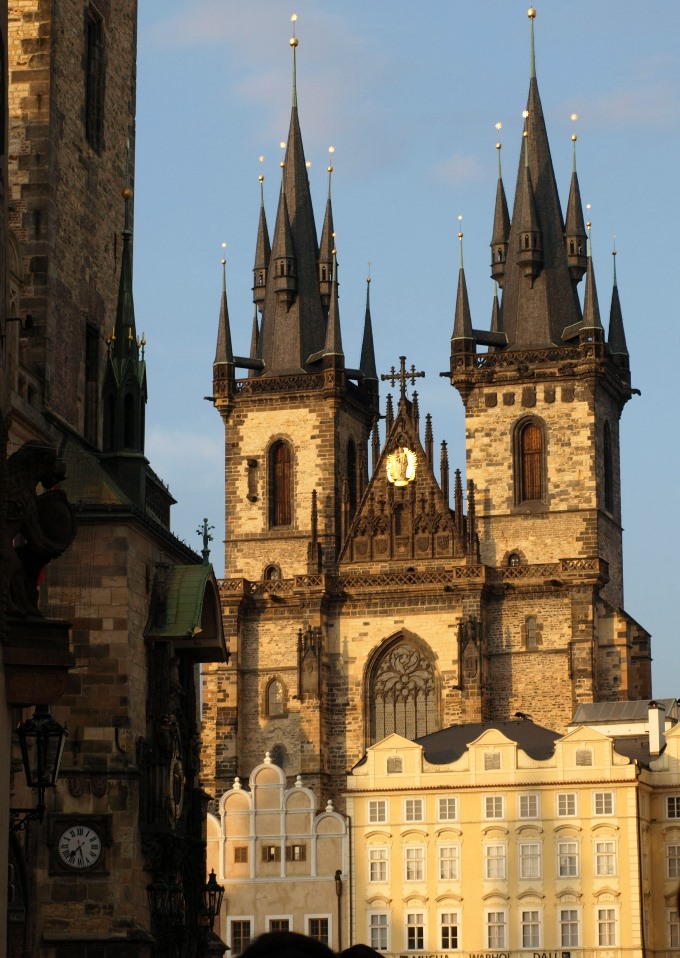
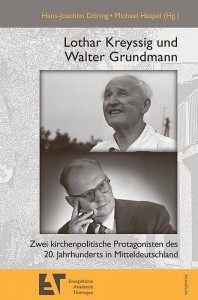 Anke Silomon’s introductory chapter provides biographical details about both men. Even though she relies on already published research, the author does give a survey of their careers, which will be of value to those readers not familiar with the subject. Both men were born during the reign of the last Kaiser, and their careers spanned the whole period up to and including the time of the German Democratic Republic, i.e. after 1949. This is followed by an article by Oliver Arnhold, who in 2010 published a comprehensive study of the “German Christians” as well as of the Eisenach Institute, which took the title of“The Institute for the Research and Removal of Jewish influence on German church life”. This contribution was drawn from a lecture Arnhold gave in 2014, which was subsequently included in this volume, and concentrated primarily on the ill-fated Institute. Hence unfortunately this means that his portrait of Walter Grundmann, who is supposed to be the main topic of this volume, is too condensed.
Anke Silomon’s introductory chapter provides biographical details about both men. Even though she relies on already published research, the author does give a survey of their careers, which will be of value to those readers not familiar with the subject. Both men were born during the reign of the last Kaiser, and their careers spanned the whole period up to and including the time of the German Democratic Republic, i.e. after 1949. This is followed by an article by Oliver Arnhold, who in 2010 published a comprehensive study of the “German Christians” as well as of the Eisenach Institute, which took the title of“The Institute for the Research and Removal of Jewish influence on German church life”. This contribution was drawn from a lecture Arnhold gave in 2014, which was subsequently included in this volume, and concentrated primarily on the ill-fated Institute. Hence unfortunately this means that his portrait of Walter Grundmann, who is supposed to be the main topic of this volume, is too condensed.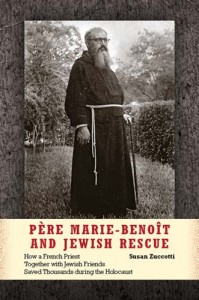 Susan Zuccotti is an established American scholar who has written a number of studies of the Holocaust, particularly dealing with events in France and Italy. Her latest contribution provides us with a well-researched biography of a little-known French Capuchin friar, Fr. Marie-Benoît, who was to play a significant role in rescuing Jews first in Marseilles in 1942 and then in Rome in 1943-4. Although he was to live for several decades after the war, his exploits were only recorded in French and remained largely unnoticed in remote French archives. Zuccotti was able to interview him in 1988 shortly before he died, but he was clearly a reticent witness, and it has taken her another twenty-five years to piece together his full story and to explore the determining factors which led him to play such an active role in assisting the Jewish refugees and victims of Nazi tyranny. The result is a portrait of a valiant and courageous priest whose witness in the cause of Christian-Jewish relations deserves to be better known to an English-speaking audience. So we can be grateful to Zuccotti for this helpful addition to the debate about how much (or how little) was done by various sectors of the Catholic Church to assist the Jewish victims of Nazism.
Susan Zuccotti is an established American scholar who has written a number of studies of the Holocaust, particularly dealing with events in France and Italy. Her latest contribution provides us with a well-researched biography of a little-known French Capuchin friar, Fr. Marie-Benoît, who was to play a significant role in rescuing Jews first in Marseilles in 1942 and then in Rome in 1943-4. Although he was to live for several decades after the war, his exploits were only recorded in French and remained largely unnoticed in remote French archives. Zuccotti was able to interview him in 1988 shortly before he died, but he was clearly a reticent witness, and it has taken her another twenty-five years to piece together his full story and to explore the determining factors which led him to play such an active role in assisting the Jewish refugees and victims of Nazi tyranny. The result is a portrait of a valiant and courageous priest whose witness in the cause of Christian-Jewish relations deserves to be better known to an English-speaking audience. So we can be grateful to Zuccotti for this helpful addition to the debate about how much (or how little) was done by various sectors of the Catholic Church to assist the Jewish victims of Nazism.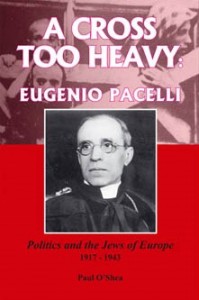 Paul O’Shea is one of the small group of Australian scholars who have become interested in the Catholic response to the traumatic events of the twentieth century, and particularly in the career of Pope Pius XII, as he sought to deal with the crises brought on by the totalitarian regimes of Europe. Like all of his predecessors, O’Shea suffers the handicap that many of the relevant documents have yet to be released from the Vatican archives, so despite his assiduous survey of Pius’ earlier life as a Vatican diplomat and later as Cardinal Secretary of State, we still have to acknowledge the tentative evaluation of all hypotheses about his war-time policies, and especially about his so-called “silence” concerning the victimization of the Jews of Europe.
Paul O’Shea is one of the small group of Australian scholars who have become interested in the Catholic response to the traumatic events of the twentieth century, and particularly in the career of Pope Pius XII, as he sought to deal with the crises brought on by the totalitarian regimes of Europe. Like all of his predecessors, O’Shea suffers the handicap that many of the relevant documents have yet to be released from the Vatican archives, so despite his assiduous survey of Pius’ earlier life as a Vatican diplomat and later as Cardinal Secretary of State, we still have to acknowledge the tentative evaluation of all hypotheses about his war-time policies, and especially about his so-called “silence” concerning the victimization of the Jews of Europe.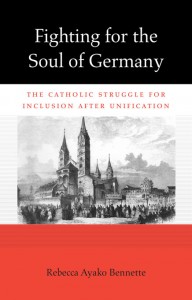 Bennette’s book is organized in two parts. The first, consisting of five chapters, relates the familiar story of the Kulturkampf with particular attention to events that served the construction of national identity and integration. The second, more original section is composed of four thematic chapters, devoted to the examination of “significant, sustained elements in the construction of Catholic national identity” (12); these elements include gender and femininity, schools and education, and the geographies of both Germany and Europe. Based on the evidence she offers, Bennette’s conclusions are difficult to disagree with: beginning immediately after German unification, German Catholics worked actively to build a national identity, one that differed from the mainstream Protestant version of Germanness and embraced their own religious particularity. The Kulturkampf not only failed to distance Catholics from their German identity; in fact, it solidified their attachment to the new nation and convinced them that they were an integral part of it.
Bennette’s book is organized in two parts. The first, consisting of five chapters, relates the familiar story of the Kulturkampf with particular attention to events that served the construction of national identity and integration. The second, more original section is composed of four thematic chapters, devoted to the examination of “significant, sustained elements in the construction of Catholic national identity” (12); these elements include gender and femininity, schools and education, and the geographies of both Germany and Europe. Based on the evidence she offers, Bennette’s conclusions are difficult to disagree with: beginning immediately after German unification, German Catholics worked actively to build a national identity, one that differed from the mainstream Protestant version of Germanness and embraced their own religious particularity. The Kulturkampf not only failed to distance Catholics from their German identity; in fact, it solidified their attachment to the new nation and convinced them that they were an integral part of it. Philosopher Philip Hallie wrote the first study of Le Chambon in 1979, and his work continues to shape the writing of this history. Using the framework of ethics, he sought to understand “how goodness happened” in Le Chambon by evaluating the behaviour of the villagers, and attributing a special role to the Protestant pastor André Trocmé. His explanation is that this was a religious community guided by a shared conscience and the principle of non-violence, so that sheltering Jews seemed “natural and necessary.”
Philosopher Philip Hallie wrote the first study of Le Chambon in 1979, and his work continues to shape the writing of this history. Using the framework of ethics, he sought to understand “how goodness happened” in Le Chambon by evaluating the behaviour of the villagers, and attributing a special role to the Protestant pastor André Trocmé. His explanation is that this was a religious community guided by a shared conscience and the principle of non-violence, so that sheltering Jews seemed “natural and necessary.”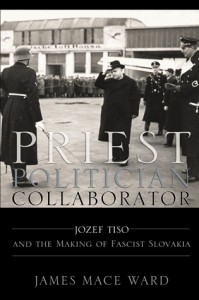 When Tiso was born in 1887, Slovakia was an outlying rural part of the Hungarian kingdom, an enclave of conservative Catholicism staunchly resisting the approach of modernity, particularly in the commercial field. His education and spiritual formation as a young priest were in the highly reactionary tradition espoused by Pope Pius X. But at the same time, he welcomed the emphasis on social action, and the need for Catholics to promote a vibrant corporate life, along with engagement in corporate Catholic politics. He became the editor of a local Slovak newspaper, stressing the Catholic values of solidarity and modesty and attacking both the free-thinking Socialists and the rapacious capitalists, especially the Jews.
When Tiso was born in 1887, Slovakia was an outlying rural part of the Hungarian kingdom, an enclave of conservative Catholicism staunchly resisting the approach of modernity, particularly in the commercial field. His education and spiritual formation as a young priest were in the highly reactionary tradition espoused by Pope Pius X. But at the same time, he welcomed the emphasis on social action, and the need for Catholics to promote a vibrant corporate life, along with engagement in corporate Catholic politics. He became the editor of a local Slovak newspaper, stressing the Catholic values of solidarity and modesty and attacking both the free-thinking Socialists and the rapacious capitalists, especially the Jews.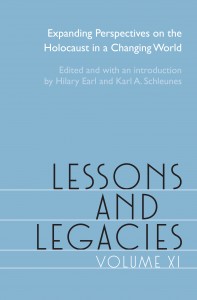 The bookend essays by senior scholars Omer Bartov and Timothy Snyder offer both critiques of current trends in the field and directions for future research. In his introductory piece, Bartov evaluates scholarly efforts of the last decade to situate the Holocaust as part of a broader phenomenon of genocidal violence in the modern world; in other words, the Final Solution is not the genocide but a genocide among others. Bartov is unsettled by attempts to compare the Holocaust to other genocides, arguing that such comparisons often obscure the particularities of the Nazi genocide and result in the erasure of the experiences of its primary victims, European Jews. Rather than understanding the Holocaust – with its enormous arsenal of scholarship and domination of popular culture – as a barrier to the study of other genocides, Bartov invites us to conceptualize it as a singular historical example of extreme violence that can in fact enrich the field of genocide studies.
The bookend essays by senior scholars Omer Bartov and Timothy Snyder offer both critiques of current trends in the field and directions for future research. In his introductory piece, Bartov evaluates scholarly efforts of the last decade to situate the Holocaust as part of a broader phenomenon of genocidal violence in the modern world; in other words, the Final Solution is not the genocide but a genocide among others. Bartov is unsettled by attempts to compare the Holocaust to other genocides, arguing that such comparisons often obscure the particularities of the Nazi genocide and result in the erasure of the experiences of its primary victims, European Jews. Rather than understanding the Holocaust – with its enormous arsenal of scholarship and domination of popular culture – as a barrier to the study of other genocides, Bartov invites us to conceptualize it as a singular historical example of extreme violence that can in fact enrich the field of genocide studies.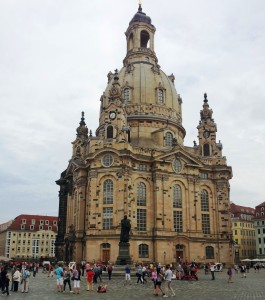


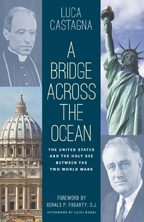
 Castagna’s excellently researched examination of the diplomatic archives of both the Vatican and the United States for this short period of twenty years provides a useful extension of comparative diplomatic history. He adds in various papal documents as well as notes the contributions of scholars of this subject in various languages. It is only unfortunate that the papers of Pope Pius XII are still unavailable, so that the next stage of the relationship between the Holy See and the United States, particularly where their policies diverged from 1940 onwards, remains to be told. (For these next events, see J. S. Conway, “Myron C. Taylor’s Mission to the Vatican 1940-1950,” Church History 44, no. 1 (March 1976): 1-15.) It can only be hoped that Castagna, who teaches at the University of Salerno, will be among those scholars invited to follow up this valuable study with a sequel, which could then demonstrate how, in the aftermath of 1945, this relationship actually became the bridge across the ocean of his title. The present short study must therefore be regarded as a prelude, describing the early stages of the thaw in Vatican-American relations which was only fulfilled when full diplomatic relations were finally established in 1984.
Castagna’s excellently researched examination of the diplomatic archives of both the Vatican and the United States for this short period of twenty years provides a useful extension of comparative diplomatic history. He adds in various papal documents as well as notes the contributions of scholars of this subject in various languages. It is only unfortunate that the papers of Pope Pius XII are still unavailable, so that the next stage of the relationship between the Holy See and the United States, particularly where their policies diverged from 1940 onwards, remains to be told. (For these next events, see J. S. Conway, “Myron C. Taylor’s Mission to the Vatican 1940-1950,” Church History 44, no. 1 (March 1976): 1-15.) It can only be hoped that Castagna, who teaches at the University of Salerno, will be among those scholars invited to follow up this valuable study with a sequel, which could then demonstrate how, in the aftermath of 1945, this relationship actually became the bridge across the ocean of his title. The present short study must therefore be regarded as a prelude, describing the early stages of the thaw in Vatican-American relations which was only fulfilled when full diplomatic relations were finally established in 1984. In their various explorations and elaboration of the papers from the Vatican archive, it is hardly surprising that these authors paint a favorable picture of the Vatican diplomats, especially of Cardinal Pacelli. Rob Ventresca, for example, in his survey of Pius XI, Eugenio Pacelli and the Italian Fascism, agrees with Castagna that Pacelli’s moderating influence was designed to head off any open breach with Mussolini’s aggressive tactics over Abyssinia, and to promote a negotiated settlement of the dispute. The price paid was to mute the Church’s public criticism of the morality of Mussolini’s imperial misadventures, which Ventresca suggests set a pattern to be repeated later with the even more serious breaches of the peace by Hitler. In her essay, Emma Fattorini takes a more critical attitude. She repeats the theme of her book Hitler, Mussolini and the Vatican, pointing to the profound differences of position and temperament between Pius XI and Pacelli. Fattorini clearly prefers the irrepressible intransigence of the elderly pontiff. Jacques Kornberg is even more critical, suggesting that both Pius XI and Pius XII failed to conduct themselves according to their own moral standards. The Vatican issued no outraged protests about the Nazis’ November 1938 Crystal Night pogrom because this was seen as not being a threat to Catholic interests. In Kornberg’s view, civic rights, or universal human rights, were not a matter for the papacy’s concern. On the other hand, Fr. Robert Trisco, in recounting the furor over the outspoken criticisms of Hitler and the Nazi regime made by Cardinal Mundelein of Chicago in May 1937, praises Pacelli for castigating privately the malicious invectives and disparagement perpetrated against the Holy See by the Nazi leadership. Trisco also describes the widespread support for Cardinal Mundelein given by different sections of American opinion, including President Roosevelt. Indeed Roosevelt took Mundelein’s advice about the difficult issue of how to restore diplomatic relations between the United States and the Vatican, but otherwise does not feature much in these essays. In all, there are few surprises, since many of the contributors have already had their say elsewhere. But, as Charles Gallacher remarks, there are still unanswered questions, such as why Pius XI sent Pacelli to the United States in 1936, or what topics were covered when Roosevelt and Pacelli met privately at Hyde Park.
In their various explorations and elaboration of the papers from the Vatican archive, it is hardly surprising that these authors paint a favorable picture of the Vatican diplomats, especially of Cardinal Pacelli. Rob Ventresca, for example, in his survey of Pius XI, Eugenio Pacelli and the Italian Fascism, agrees with Castagna that Pacelli’s moderating influence was designed to head off any open breach with Mussolini’s aggressive tactics over Abyssinia, and to promote a negotiated settlement of the dispute. The price paid was to mute the Church’s public criticism of the morality of Mussolini’s imperial misadventures, which Ventresca suggests set a pattern to be repeated later with the even more serious breaches of the peace by Hitler. In her essay, Emma Fattorini takes a more critical attitude. She repeats the theme of her book Hitler, Mussolini and the Vatican, pointing to the profound differences of position and temperament between Pius XI and Pacelli. Fattorini clearly prefers the irrepressible intransigence of the elderly pontiff. Jacques Kornberg is even more critical, suggesting that both Pius XI and Pius XII failed to conduct themselves according to their own moral standards. The Vatican issued no outraged protests about the Nazis’ November 1938 Crystal Night pogrom because this was seen as not being a threat to Catholic interests. In Kornberg’s view, civic rights, or universal human rights, were not a matter for the papacy’s concern. On the other hand, Fr. Robert Trisco, in recounting the furor over the outspoken criticisms of Hitler and the Nazi regime made by Cardinal Mundelein of Chicago in May 1937, praises Pacelli for castigating privately the malicious invectives and disparagement perpetrated against the Holy See by the Nazi leadership. Trisco also describes the widespread support for Cardinal Mundelein given by different sections of American opinion, including President Roosevelt. Indeed Roosevelt took Mundelein’s advice about the difficult issue of how to restore diplomatic relations between the United States and the Vatican, but otherwise does not feature much in these essays. In all, there are few surprises, since many of the contributors have already had their say elsewhere. But, as Charles Gallacher remarks, there are still unanswered questions, such as why Pius XI sent Pacelli to the United States in 1936, or what topics were covered when Roosevelt and Pacelli met privately at Hyde Park.